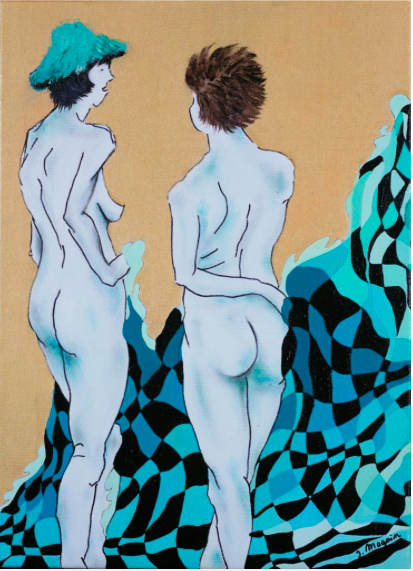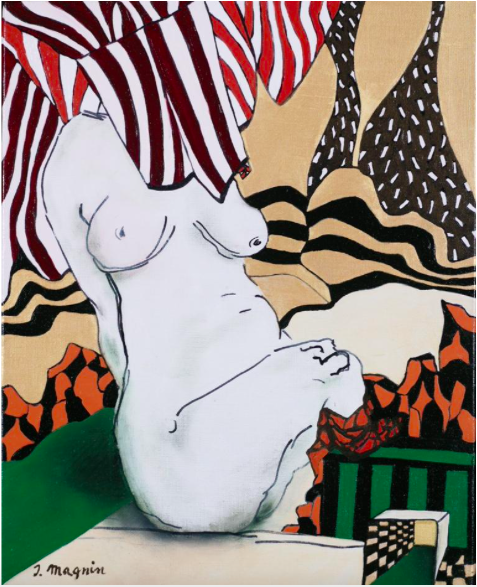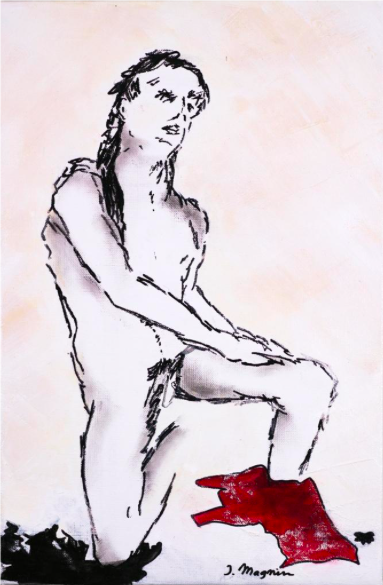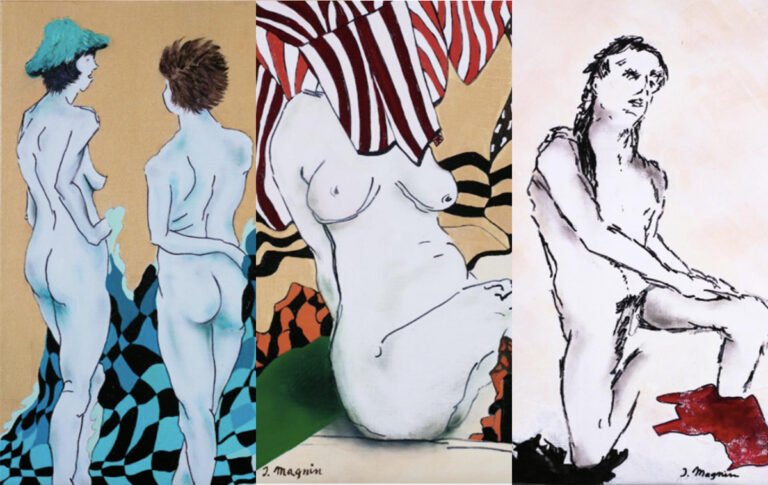Isabelle Magnin, a French artist, has always viewed the world as a tapestry of images. Art has been her companion since childhood, with drawing and painting woven into her daily life from the age of seven. However, her interests stretched far beyond the artistic realm. Her passion for science—particularly in fields like mathematics, physics, and algorithms—led her to an esteemed career as a researcher in Medical Imaging at INSERM. Throughout her scientific journey, she worked with global experts from the USA, China, Japan, and Europe, receiving accolades such as the European Federation for Non-Destructive Testing’s gold medal for innovation in 1994 and being named Chevalier de la Légion d’honneur in 2015.

Magnin’s art reflects her deep-rooted fascination with the intricate beauty of nature and humanity. Her work explores the relationship between humans and nature, especially focusing on the complexity and depth found in both. Using a blend of oil painting and digital techniques, she crafts works that express connection, emotion, and duality. Her influences span from Renaissance masters to Surrealist icons like Niki de Saint Phalle and Klimt, fusing tradition and modernity in her international creations.

The “Milky Nudes” series (“Nus lactés”) embodies the intimacy of vulnerability, nature, and human emotion. Each piece in this collection, including The Wave, Hidden Face, and Timothée, tells a story that intertwines the personal with the universal, expressed through Magnin’s delicate use of oil and ink.

The Wave (La Vague) introduces two women basking in a rare moment of freedom, exchanging their life stories as the ocean caresses them. This scene captures a fleeting connection between the women and the natural world, where the water becomes a conduit for their conversation. The wave itself is alive, ever-changing, represented as a deformable mesh—its shape constantly shifting like the unpredictable flow of life. Magnin’s treatment of the waves, with their dynamic form, serves as a reminder of life’s continual movement, representing both the fleeting nature of joy and the way water cradles and nurtures without being fully grasped.
Oil and ink come together in this work to create a lively yet serene texture. The women, painted with vibrant oils, are still, while the ink-drawn waves ripple around them, emphasizing the contrast between the peace of their moment and the surrounding movement. The scene urges the viewer to reflect on the transitory nature of such peaceful encounters, a meditation on the passage of time and the moments that slip away like water.
In Hidden Face (Face cachée), Magnin shifts from the external world to a more internal exploration. The figure, seated with her legs folded, could almost be mistaken for a statue, her face concealed under an awning. There is an ambiguity in her hidden position—does she wish to escape the world, or is she shielding herself from an internal reality? Magnin captures this tension of self-reflection and emotional distance in a way that speaks to the viewer’s own hidden struggles.
The painting’s gold background invokes a sense of opulence and complexity, reminiscent of Klimt’s works. The gold’s richness contrasts with the woman’s hidden form, suggesting that even in moments of concealment or self-doubt, there remains beauty and depth. Magnin leaves the meaning of this hiddenness open for interpretation, allowing the audience to question whether the figure is evading something external or navigating an inner conflict.
Timothée introduces a masculine subject to the collection, standing in contrast to the contemplative, abstract tone of the other works. Here, the scene is charged with narrative energy—Timothée kneels, one knee on the ground, amid tattered clothing. Magnin does not offer an explicit answer to the scene’s backstory, leaving viewers to ponder whether this is the aftermath of a fight, a tournament, or an internal struggle. His posture hints at both defeat and resilience, creating a visual tension that invites viewers to imagine their own version of the story.
While Timothée departs from the abstract explorations of The Wave and Hidden Face, it brings a rawness that adds to the collection’s emotional range. Magnin’s decision to leave the scenario ambiguous deepens the painting’s resonance, encouraging a personal reflection on conflict, whether external or within oneself.
Isabelle Magnin’s “Milky Nudes” demonstrates her skill at blending narrative and emotion in visual form. By combining oil and ink, she creates textured, evocative pieces that draw viewers into her world of connection and introspection. Each painting offers its own story, while also inviting personal interpretation, allowing viewers to find pieces of themselves within the art.

